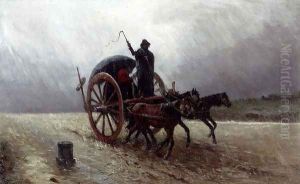Francesco Giovanni Mancini Paintings
Francesco Giovanni Mancini was an Italian painter during the Baroque period, known for his expressive portraits, religious compositions, and landscapes. Born in Sant'Angelo in Vado, in the Marche region of Italy, in 1679, Mancini demonstrated artistic talent at a young age. He initially studied under the guidance of local artists before moving to Rome to further his education and career.
In Rome, Mancini became associated with leading artists and patrons of his time, which helped him gain commissions and recognition. Although not as widely known as some of his contemporaries, his work was appreciated for its naturalistic approach and dynamic use of light and shadow, a technique that was highly influenced by the works of Caravaggio, whose style dominated the Roman art scene during Mancini's early years in the city.
Mancini's career spanned several decades, during which he produced a significant body of work that included altarpieces for churches, portraits of notable personalities, and landscape paintings that captured the Italian countryside. His religious paintings are particularly noted for their emotional depth and the humanistic approach to their subjects. Mancini's portraits are characterized by their realistic depiction of his sitters, often set against a landscape or architectural background, which added depth and context to the figures.
Francesco Giovanni Mancini passed away in 1758 in Rome. While he may not have achieved the fame of some of his peers, his contributions to Italian Baroque art have been recognized by art historians, with his works held in various collections and museums across Europe. Mancini's legacy is that of a skilled painter who captured the spirit of his time with a particular sensitivity to the natural world and the human condition.
